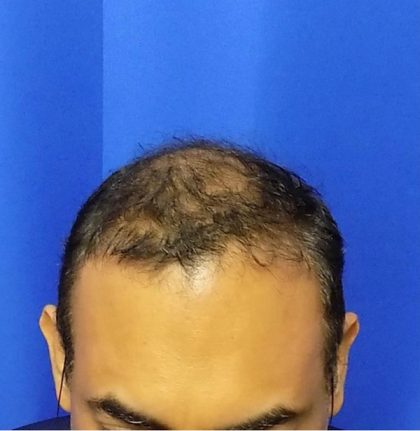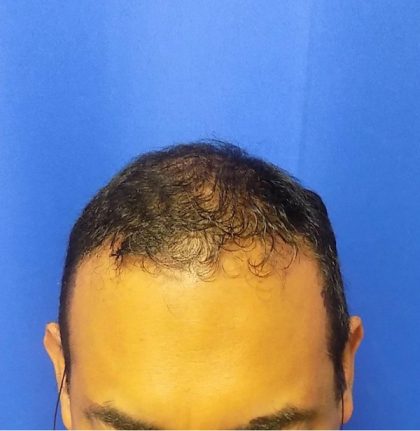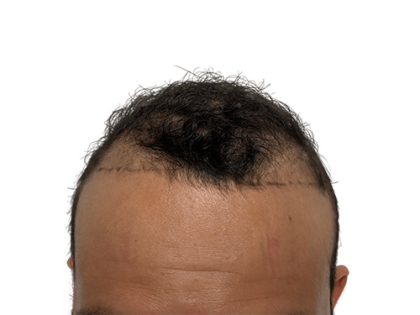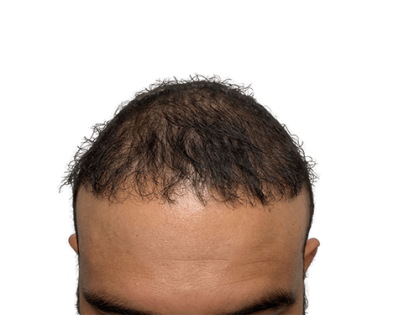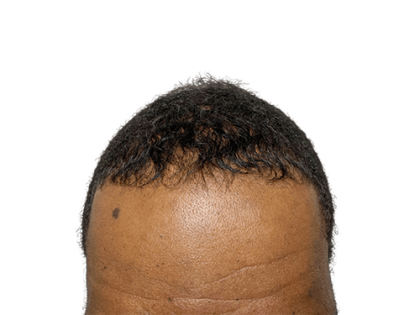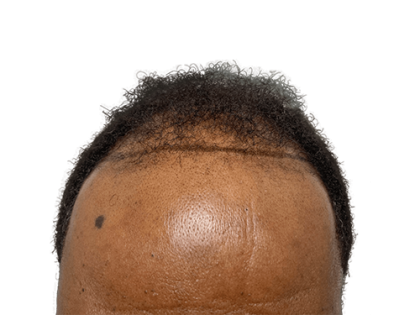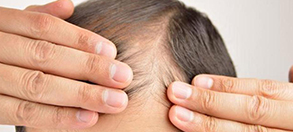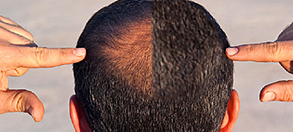Hybrid hair restoration treatment combines surgical hair transplantation with other less invasive hair restoration therapies to help patients achieve a fuller head of hair. Though certain hair restoration techniques may be more effective than others, every patient is different, and a multi-pronged approach boosts the success of hair restoration further! There are two main types of hair restoration: surgical and non-surgical, and each has its advantages. Surgical includes FUE Hair Transplants whereas non-surgical includes PDO, Laser Hair Therapy, Scalp Micropigmentation (SMP), Topical Compounds, Supplements and Shampoos. If you’re concerned about hair loss, you deserve every advantage available for restoring your hair.
Men and women can receive comprehensive treatment for hair loss at the Houston Hair Transplant Center in Austin and Houston. Dr. Goran Jezic is a highly respected and experienced hair restoration surgeon, and by carefully tailoring hair restoration treatment plans, he has helped hundreds of patients achieve their desired results.
The first step in the hybrid hair restoration approach is to schedule a consultation with Dr. Jezic. Unlike many other surgeons, Dr. Jezic performs all consultations himself, which means you can have your questions answered directly by the doctor. So what are you waiting for? Call us today at (713) 864-2300 or fill out this form.
Contents
- 1 Before and After Photos
- 2 About Hair Transplantation
- 3 FUE Hair Transplants
- 4 Who Would Benefit from Hybrid Hair Restoration?
- 5 Non-Surgical Hair Restoration
- 6 Hybrid is Better
- 7 When to Consider Hybrid Hair Restoration
- 8 Thicker, Fuller Hair
- 9 Getting Ready for Hair Restoration
- 10 Cost of Hybrid Hair Restoration in Houston, TX
- 11 References
Before and After Photos
About Hair Transplantation
Hair transplantation is a minor surgical procedure, performed in a clinic setting, that transplants hair follicles from a donor site (back and sides of the head) to a recipient site (thinning and balding areas) on the scalp. The technique is effective for treating androgenetic alopecia, also known as male or female pattern balding. Because the donor follicles are resistant to the hormones that cause hair loss, they can survive and produce healthy hair in areas previously affected by this condition. At Houston Hair Transplant Center, we perform Follicular Unit Extraction (FUE). FUE is considered the “gold standard” for hair transplantation. [1]
Houston Hair Transplant Centers offer automated hair restoration with NeoGraft and ATERA.
FUE Hair Transplants
Follicular Unit Extraction or Excision (FUE) extracts individual hair follicles from a donor area without the linear incision used in traditional techniques; this dramatically reduces visible scarring and allows patients to wear short hairstyles. Dr. Jezic consistently delivers natural-looking hair restoration utilizing this technique, which is why pro athletes, actors & celebrities regularly seek out his services.
What is NeoGraft?
NeoGraft hair restoration is a sophisticated FUE technique that uses state-of-the-art equipment to automate the harvesting of hair follicles (grafts). NeoGraft’s handpiece uses pneumatic pressure to efficiently extract and implant follicular grafts. This reduces damage to the grafts so that more grafts are able to survive the process. [2]
ATERA FUE
ATERA is another hair transplantation device that uses a handpiece to extract follicles automatically. The device stores the harvested follicular units in optimal conditions until they can be implanted into the recipient sites. Because ATERA has multiple sizes of punches for extraction, it’s ideal for patients of all hair types, specifically those with curly or kinky hair, which is often unable to be transplanted with other hair transplantation approaches.
Who Would Benefit from Hybrid Hair Restoration?
Both men and women can benefit from the combined efforts of surgical and non-surgical hair restoration methods. If you experience androgenetic alopecia or want to prevent further hair loss, a hybrid treatment plan could be the most effective option. FUE hair transplantation simply redistributes hair for a fuller-looking scalp. But non-surgical hair restoration therapies can preserve existing hair, and improve growth, density, and may encourage the production of new hair. Women in particular will benefit from a combined approach since female hair loss differs from male hair loss. Where men lose hair in specific areas at the crown and above the temples, women lose hair more diffusely. [3] As a result, not all women experiencing hair loss have adequate donor follicles. Alternative treatments such as topical compounds, laser hair therapy, SMP, PDO, supplements and shampoos may offer the best results in these cases.
The best way to know if you’re a candidate is to schedule a consultation with Dr. Jezic. He will examine your hair and scalp, ask about your medical history and current health, and make treatment recommendations based on his findings. For those who can’t make it to our offices in Houston or Austin, we offer virtual consultations.
Non-Surgical Hair Restoration
Surgeons are increasingly using non-surgical options in combination with FUE. Today, the most common non-surgical procedure is autologous conditioned plasma (ACP) therapy. Treatments that use minoxidil and finasteride like Rogaine and Propecia are also readily available. Others include PDO, Laser Hair Therapy, Topical Compounds, Vitamins, Supplements & Shampoos.
ACP Therapy
ACP, or autologous conditioned plasma, is a concentration of platelets derived from the patient’s blood which, when injected into the scalp, can promote hair growth, and stimulate the production of additional blood vessels and follicles. For this reason, ACP is sometimes called the “vampire hair treatment.”
The plasma is obtained by drawing a small amount of blood from a vein in your arm and then spinning it in a centrifuge to separate the platelets and plasma from the red blood cells. The plasma is treated before being injected into the scalp with a very fine needle.
Minoxidil (Rogaine)
Minoxidil was initially developed as a treatment for high blood pressure. [4] But one of the side effects was unexpected: hair growth. It is available over the counter in both liquid and foam form. Applied to the scalp twice daily, Minoxidil takes around 4-6 months to see results and needs to be used twice a day, every day. It works by widening blood vessels and increasing blood flow to the scalp. This helps supply the roots of your hair with more nutrients and oxygen, promoting hair growth. It also lengthens the growth cycle of the hair, allowing hair shafts to become thicker and longer. [5]
Finasteride (Propecia)
Finasteride is a pill for men that is taken once a day. It was initially developed as a treatment for enlarged prostates. But like minoxidil, one of the side effects was unexpected hair growth.
Finasteride works by inhibiting the production of DHT (5 alpha-dihydro-testosterone), the hormone responsible for hair loss. By reducing the amount of DHT in the scalp, finasteride can help to preserve existing hair.
It can take six months or longer to see results from finasteride, and you need to keep taking it to maintain any benefits.
Hybrid is Better
Researchers have made significant breakthroughs in hair restoration in the last few years, and hybrid options are readily available. Many hair transplant surgeons understand that a hybrid plan works best for the most noticeable results. This approach combines the strengths of surgical and nonsurgical hair restoration to give patients the best possible chance for success. For example, Dr. Jezic may recommend FUE combined with Autologous Conditioned Plasma (ACP) therapy to stimulate the transplanted hair follicles’ growth and promote additional growth.
This approach prevents additional hair loss, and safeguards the results you’ve achieved with your hair transplant.
If you need help determining which method is right for you, don’t worry. Dr. Jezic will advise as to which treatment plan is best for your individual needs during your consultation.
When to Consider Hybrid Hair Restoration
If you’re just starting to lose your hair, you may be able to control the progression of hair loss with medications like Rogaine, Propecia, or ACP therapy alone. But eventually, you may reach a point where a hybrid treatment is the better option. A hair transplant can restore your hairline, fill in thinning areas, and give you a thicker, fuller head of hair. A hair transplant is a more immediate, long-term solution. However, in order to maintain the health of the transplanted hair follicles, maintaining a consistent regimen of topical treatments may be required.
Thicker, Fuller Hair
Anyone who has lost their hair knows the toll it can take on your self-confidence. But there’s no need to suffer needlessly. With today’s advanced hair restoration techniques, you can have a thick, full head of hair that you can be proud of.
As your thicker hair grows, your confidence and self-image will improve and you’ll start to feel like your old self again. With a long-term solution like hair restoration surgery, supported by non-surgical treatments, you can prevent future hair loss.
Getting Ready for Hair Restoration
The Houston Hair Transplant Center staff will go through each step of your personalized hair restoration plan during your consultation. We’ll give you thorough instructions on how to prepare and what to expect from whichever treatment you and Dr. Jezic decide to pursue. We may ask you to stop using specific hair products several weeks before your operation. A week before your FUE procedure, you must quit smoking. Although the harvesting process is minimally-invasive, we want to guarantee your safety and satisfaction as much as possible. Please let Dr. Jezic know of any medications you are taking before starting your hair restoration treatment. At your personal consultation, we’ll discuss the exact details of your treatment based on Dr. Jezic’s recommendations.
Cost of Hybrid Hair Restoration in Houston, TX
The cost of your hair transplant procedure will depend on the finer details of your treatment plan. Let one of Houston’s top hair restoration surgeons work on your behalf. Schedule your personal consultation with our helpful staff members by calling (713) 864-2300 today.
Houston Hair Transplant Center has a blog. Read it to learn more about FUE, ACP, and other hair restoration treatments that could benefit you.
References
- Chan, D., & Ducic, Y. (2015). Citation: Chan D, Ducic Y. An Update on Hair Restoration. J Aesthet Reconstr Surg, 1(1), 1. doi:10.4172/2472-1905.10008
- Kim HG, Bae TW, Kim KH, Lee HS, Lee SI. Follicular Unit Classification Method Using Angle Variation of Boundary Vector for Automatic Hair Implant System. ETRI Journal. 2016;38(1):195-205. doi:10.4218/etrij.16.0114.0136
- Birch MP, Lalla SC, Messenger AG. Female pattern hair loss. Clinical and Experimental Dermatology. 2002;27(5):383-388. doi:10.1046/j.1365-2230.2002.01085.x
- Badri T, Nessel TA, Kumar D D. Minoxidil. PubMed. Published 2022. Accessed October 4, 2022. https://www.ncbi.nlm.nih.gov/books/NBK482378/#:~:text=Minoxidil%20(also%20called%202%2C4
- Fiedler-Weiss VC. Topical minoxidil solution (1% and 5%) in the treatment of alopecia areata. Journal of the American Academy of Dermatology. 1987;16(3):745-748. doi:10.1016/s0190-9622(87)80003-8

